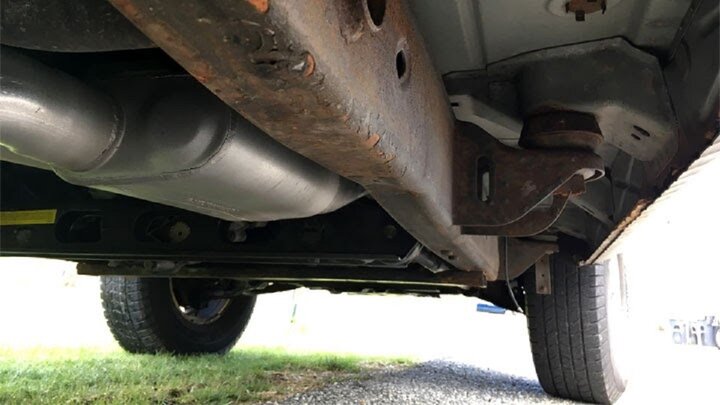The car chassis is a crucial component that enables a vehicle to operate smoothly, ensuring the safety of the driver and passengers.
What is a car chassis? The car chassis plays the role of a support structure for various other components of a vehicle. It helps form the overall shape of the car, providing solidity and safety while in motion.
A typical automobile chassis consists of two main longitudinal frames running along the length of the vehicle. These frames are further reinforced and balanced by several additional cross or diagonal members, enhancing the structural integrity and stability of the vehicle’s frame.
Though the precise design of each chassis varies based on the specific type and model of the vehicle, they all serve the common purpose of ensuring rigidity, stability, and aesthetic appeal for the vehicle.
All major components, such as the engine, transmission components, suspension system, and braking system, are mounted onto this chassis frame. Essentially, without a well-designed and sturdy chassis frame, a vehicle cannot exist.
The chassis frame is meticulously designed, considering the combination of parts, angles, and specific crossbar densities. This affects characteristics such as steering wheel tilt, vehicle frontal shape, and driving dynamics. Even slight variations in these angles and crossbar densities can lead to a range of issues related to driving dynamics.
Signs indicating chassis damage in a car:
- Structural deformity: The front end of the vehicle may become misaligned or structurally deformed due to collisions. This area is often designed to absorb impacts, making it prone to deformation. Severe misalignment, visible even to the naked eye on smaller components, could indicate significant damage.
- Abnormalities in connecting components: Various parts within the car’s chassis system are connected using rivets, bolts, or welding. Any cracks or discrepancies observed beneath the chassis or in the connecting bars not aligning uniformly with the opposite axis could signify a major issue requiring attention.
- Engine performance issues: If the engine only operates at low speeds, potential causes may include excessively low idle speed, fuel supply depletion, or a clogged filter. Rectification might involve adjusting the engine’s idle speed, ensuring proper fuel supply, or replacing/cleaning the filter.
- Unusual exhaust system noises: Detecting unusual sounds or exhaust odors emanating from beneath the hood warrants immediate inspection. Start by running the engine and opening the hood for a detailed check-up.

- Unstable engine operation: Hearing noises from beneath the vehicle, especially when driving on rough or uneven roads, may indicate worn-out bearings and steering column joints. Considering a timely replacement of these parts, particularly the A-arms, is crucial before the situation exacerbates and potentially impacts other chassis components.
- Unpleasant tire noises when stopping: Intense squealing noises from the wheels might indicate tire wear or distortion. Replacing the tires becomes imperative in such cases.
- Vehicle drifting when in operation: A vehicle drifting to one side upon braking could stem from uneven brake force distribution caused by oil-contaminated or partially blocked brake lines. Hence, owners should seek repairs promptly to prevent potential rollover risks during high-speed or cornering situations.
Understanding these signs helps in identifying potential issues with the car’s chassis, ensuring timely maintenance and a safer driving experience.












